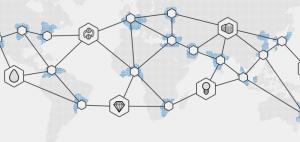
This article represents practice test / interview questions and answers and revision notes on Hyperledger Fabric Distributed Ledger**. These questions and answers can prove to be very helpful to check your knowledge on Hyperledger Fabric if you are appearing for Hyperledger Fabric interview in near future.
Hyperledger Fabric is an open-source framework for building distributed ledger solutions. The distributed ledger is maintained by every peer participating in the network. It is stored as a combination of a transaction logs and a world state database (key-value pairs).
Revision Notes – Hyperledger Fabric Distributed Ledger Concepts
- The distributed ledger is a combination of following:
- Blockchain to store immutable ordered/sequenced records; It is stored in form of transaction logs and stored in peers’ file system (local or attached storage). An analogy is a Write-ahead Log (WAL) of a classical RDBMS/NoSQL database.
- A database to maintain the state of Fabric network. It is also called as World State database. This can be generated from the Blockchain (Transaction logs) at any point in time as goes the WAL analogy from which a classical database can be recreated. In another word, World state database can be recovered anytime from transaction logs.
- Every channel is associated with one ledger.
- Each peer maintains a copy of each channel of which it belongs to.
- A blockchain transaction consists of the following information:
- Read-write set of key-value pairs
- Signatures of every endorsing peers
- Consensus (ordering) service is responsible for ordering the transactions in a block of transactions.
- Ordering service is responsible for delivering the block of transactions to the peers on a specific channel
- Chain of Blocks (Blockchain) is stored in form of transaction logs as part of the peer’s local file system or attached storage. It is like a Write-Ahead Logging (WAL) of a classical SQL/NoSQL based database.
- Every block in a Blockchain consists of the following:
- A block header which consists of the following:
- A hash of all the transactions in the comprising the block
- A hash of the prior block header
- A sequence of transactions
- A block header which consists of the following:
- World state database consists of all keys’ information stored in transaction logs. It can be said to be simply an indexed view into the Blockchain’s transaction log. Thus, it can be regenerated from the chain at any time.
Practice Test – Hyperledger Fabric Distributed Ledger Concepts
[wp_quiz id=”6160″]
Reference
- Coefficient of Variation in Regression Modelling: Example - November 9, 2025
- Chunking Strategies for RAG with Examples - November 2, 2025
- RAG Pipeline: 6 Steps for Creating Naive RAG App - November 1, 2025
I found it very helpful. However the differences are not too understandable for me